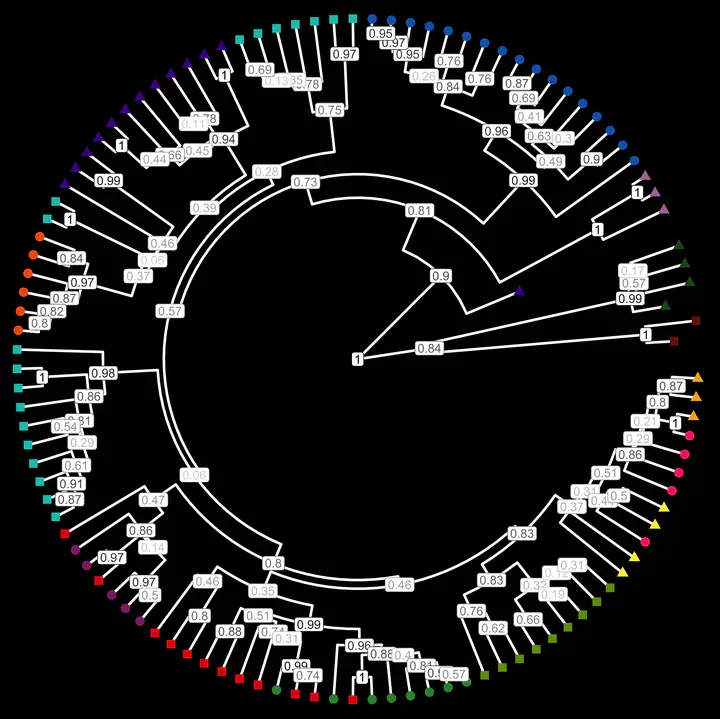Dissertation
 Maximum clade credibility tree of Mixtecan
Maximum clade credibility tree of Mixtecan
Disclaimer: My dissertation is cumulative and two of the three articles are still under review, which is why there is an embargo on ProQuest until fall 2024. Please contact me for a copy!
Title: Confronting challenges in historical linguistics: Quantitative approaches to dialect area subgrouping and tone change in Mixtec
Abstract: This dissertation investigates the dynamics of language change in the Mixtec languages, a branch of Mixtecan (Otomanguean). Spread over a large mountainous area in southern Mexico, the history of this language family is characterized by repeated migrations, diversified local varieties, and ongoing inter-varietal contact, leading to its characterization as a dialect continuum. Mixtec languages are also well known for their intricate systems of grammatical and lexical tone, which have to be reconstructed to Proto-Mixtec and beyond.The first study applies a Bayesian phylogenetic model to lexical cognacy data of 137 Mix- tecan varieties. This model recovers the three main branches of Mixtecan (Mixtec, Triqui, and Cuicatec) as well as a number of well-supported higher- and lower-level groups within Mixtec. It also identifies varieties that are only loosely connected to the rest of the family and thus reveals that there are both wave-like and tree-like diversification processes at work and shows that subgrouping is possible and informative in a language family characterized as a dialect continuum. The second study provides a comprehensive account of sound changes in Mixtec. The sound changes are coded as fine-grained variables in a framework adapted from multivariate typology, and analyzed using computational methods. This allows for high accuracy and detail with regards to the sound changes but also for making visible larger patterns and tendencies. The latter show that the distribution of Mixtec sound changes generally aligns well with the subgroups proposed in the first study. The third study addresses the question of whether tones can be used for subgrouping and whether or not they change faster than segments. Building on the same typological framework as for the second study, I show that tone change can be analyzed in the same way as segmental change. I apply quantitative methods to calculate phylogenetic signal and rates of tonal versus segmental change based on the family tree obtained in the first study. The results show that tone change does not differ from segmental change in any meaningful way; that is, tones also show phylogenetic signal and their rates of gain and loss are not different from those of segments. Each study is designed to address the research questions in a empirical way, by including all sufficiently reliable and available Mixtec language data, which will be shared in public repositories along with all aspects of data handling, coding, and scripts used in the analyses.